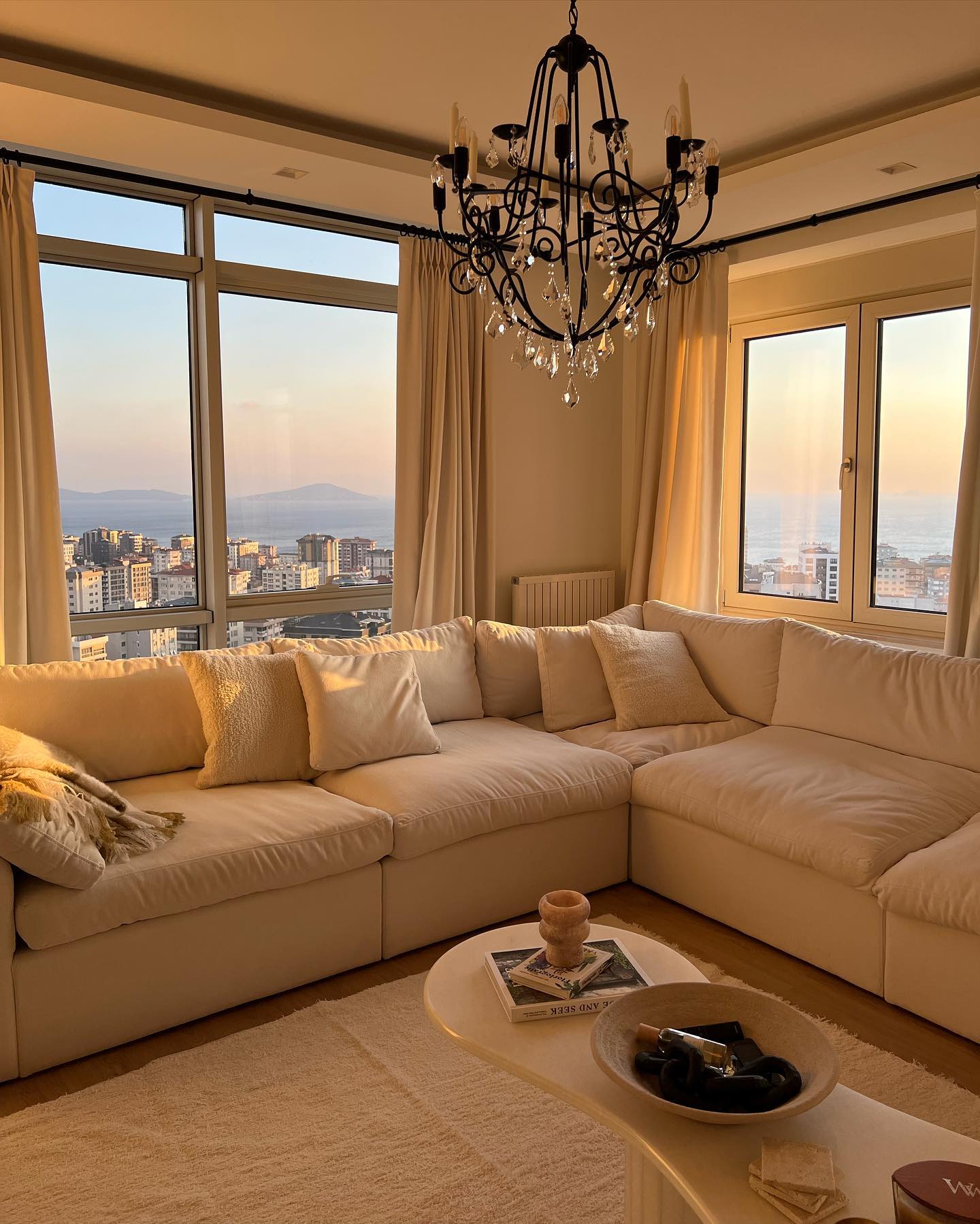Deciding where to place a sectional sofa in your living room can be a tricky design dilemma. With their spacious seating and ability to define spaces, sectionals have become a popular living room furniture choice.
But with so many size and shape options, how do you choose the right sectional for your living room layout? And where exactly should you position it to maximize both style and function? There are lots of sectional arrangement options to consider.
I’ll walk through the key factors to consider when arranging a sectional in your living room. We’ll look at how to use sectionals to create separate spaces or zones, how to arrange seating for ideal TV viewing, and tips for fitting sectionals into small living rooms.
Proper sectional placement can make all the difference in creating a living room that is both aesthetically pleasing and practical for daily living. With some simple guidelines, you can place your sectional with confidence, giving your living room a cohesive layout focused on comfort and style.
Remember, no matter which placement you choose, always make sure there is enough space to walk around between the sectional and adjacent walls/furniture – about 36-48 inches is ideal!
Away from the Entrance
Which way should a sectional sofa face? When thinking about the layout of the room, it’s best for the chaise lounge part of the sofa to be placed at the far end of the main entrance to the room. This is to prevent blocking the natural flow of movement and traffic in your living room.
If there are frequently used entryways, pathways, or doorways, ensure that the orientation of the sectional does not obstruct the movement and allows for easy access to other areas of the room.
Choose a Focal Point
Where do you want to look when you are sitting on your sectional? Placing the sofa opposite a key focal point of the room, whether that’s a window with a view or a large TV screen is one of the best ways to arrange a sectional in a living room.
You could position a sectional to face a focal point like a fireplace to create a cozy relaxation space, or the TV for an entertainment space. Angle part of the sectional towards the focal point and arrange the rest in a U-shape around it. Place accompanying armchairs or accent tables behind the sectional to frame the focal point as the main feature of the arrangement.
Floating a Sectional
Pull a sectional away from the walls to create a central focal point in an open floor plan. Leave enough space to walk around it.
Pull a sectional away from the walls and float it in the center of the room to make it a focal point in an open floor plan. Leave ample space around all sides for walking between the sectional and other furnishings or walls. Layer rugs and accent pillows to ground the floating sectional so it feels like a defined, functional living space.
Placement Against a Wall
Should sectional sofas be placed against the wall? Placing a sectional sofa against the wall can be a practical choice in smaller or narrow rooms where space is limited. It can help optimize the available space and create a more open flow in the room. However, in larger rooms, pulling the sectional away from the wall can create a more spacious seating arrangement.
If your room has a natural focal point as mentioned earlier, placing the sectional against the wall may not be the ideal choice.
In the Corner
Arranging a sectional in the corner of a living room is a great way to utilize the space efficiently. Face the open side of the sectional towards the center of the room. This creates a more welcoming space for conversation. Float the sectional off the walls a few inches. This prevents it from feeling too crammed into the corner.
Dividing an Open Layout with a Sectional
One great way to work with an open-concept living space is to use a sectional to divide and define separate zones. Positioning your sectional strategically in an open floor plan can help delineate spaces for dining, lounging, and entertaining while still maintaining an airy, uninterrupted feel.
One effective layout option is to place your sectional to separate the living room from the adjacent kitchen and dining area. Angle one side of the sectional near the edge of the eating zone to mark the transition into the living space.
Incorporate a console, bookshelves or accent chairs behind the sectional to reinforce the line between the two areas. Anchor the sectional using a rug underneath and accent pillows on top. This grounds it and defines the space.
Make sure to leave enough walkway space behind and around the sofa. This creates a logical divider between the rooms without totally closing the space off. Choose a sectional with a low profile or transparent legs to maintain an open sightline across the entirety of the home.
Facing an Accent Chair
An eye-catching way to configure a sectional and living room accent chair is to position them across from each other, establishing a dedicated conversation area. Place the sectional and accent chair perpendicular, angled slightly inward to promote intimacy. The chairs should be close enough to reach out and touch hands, generally about 4-8 feet apart.
An area rug underneath can further define the conversation zone. To make the seating cohesive, choose an accent chair that complements the sectional in style and color.
This sectional arrangement immediately draws the eyes into the furniture vignette you have created and provides the perfect resting spot for enjoying lingering discussions or reading in quiet solitude. The clever placement of sectional and accent chairs easily encourages chit-chatting and family interactions.
